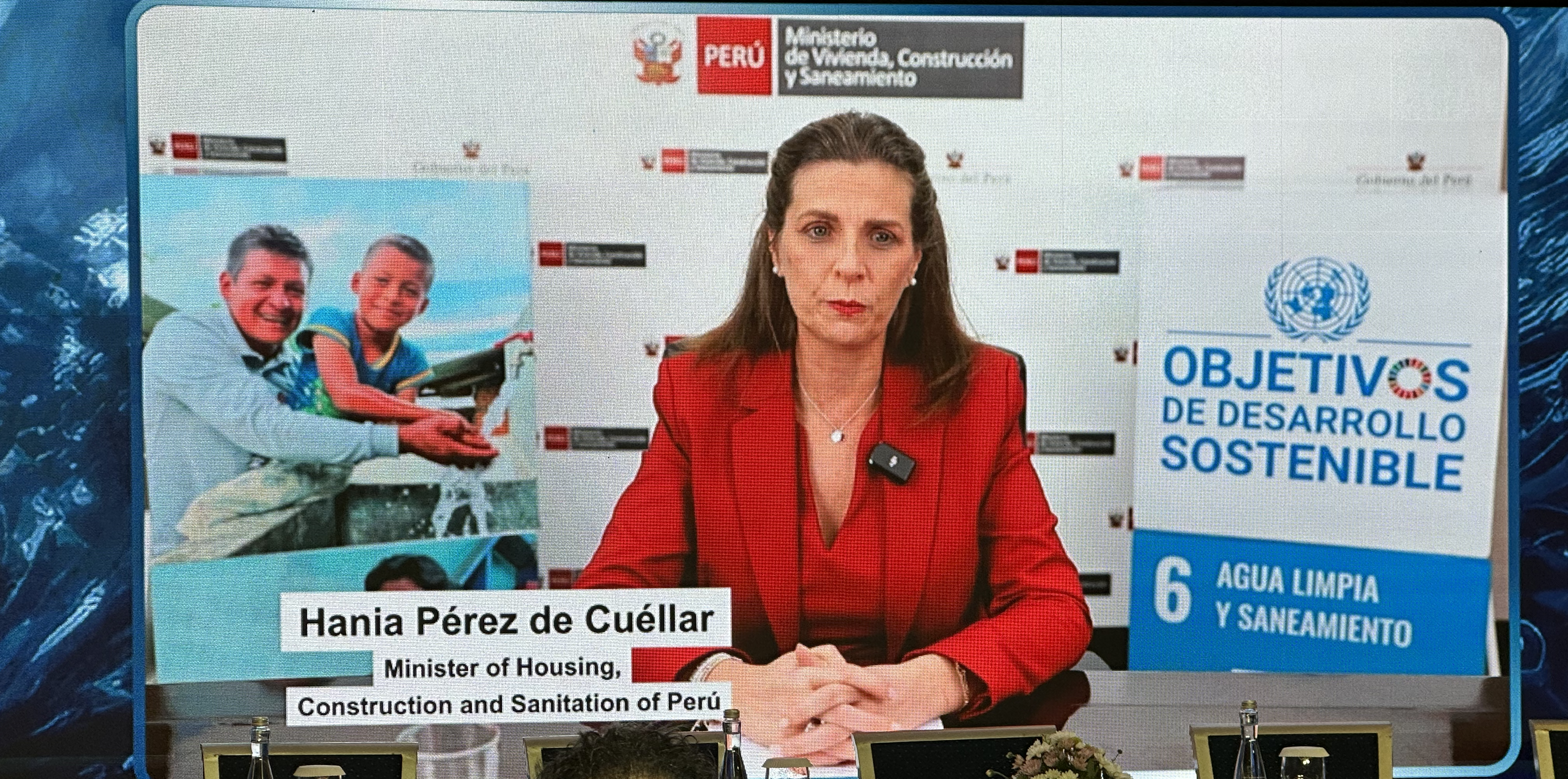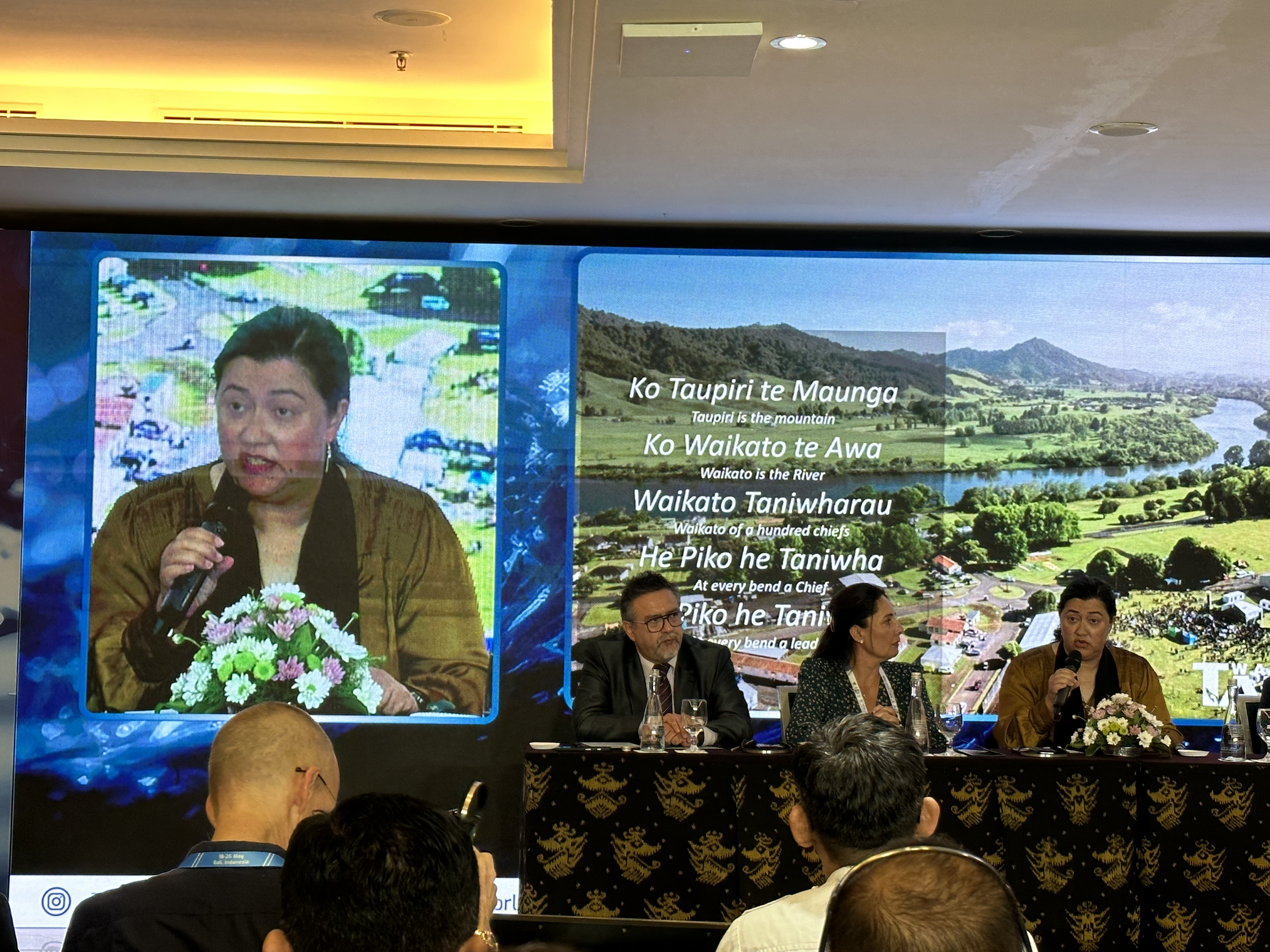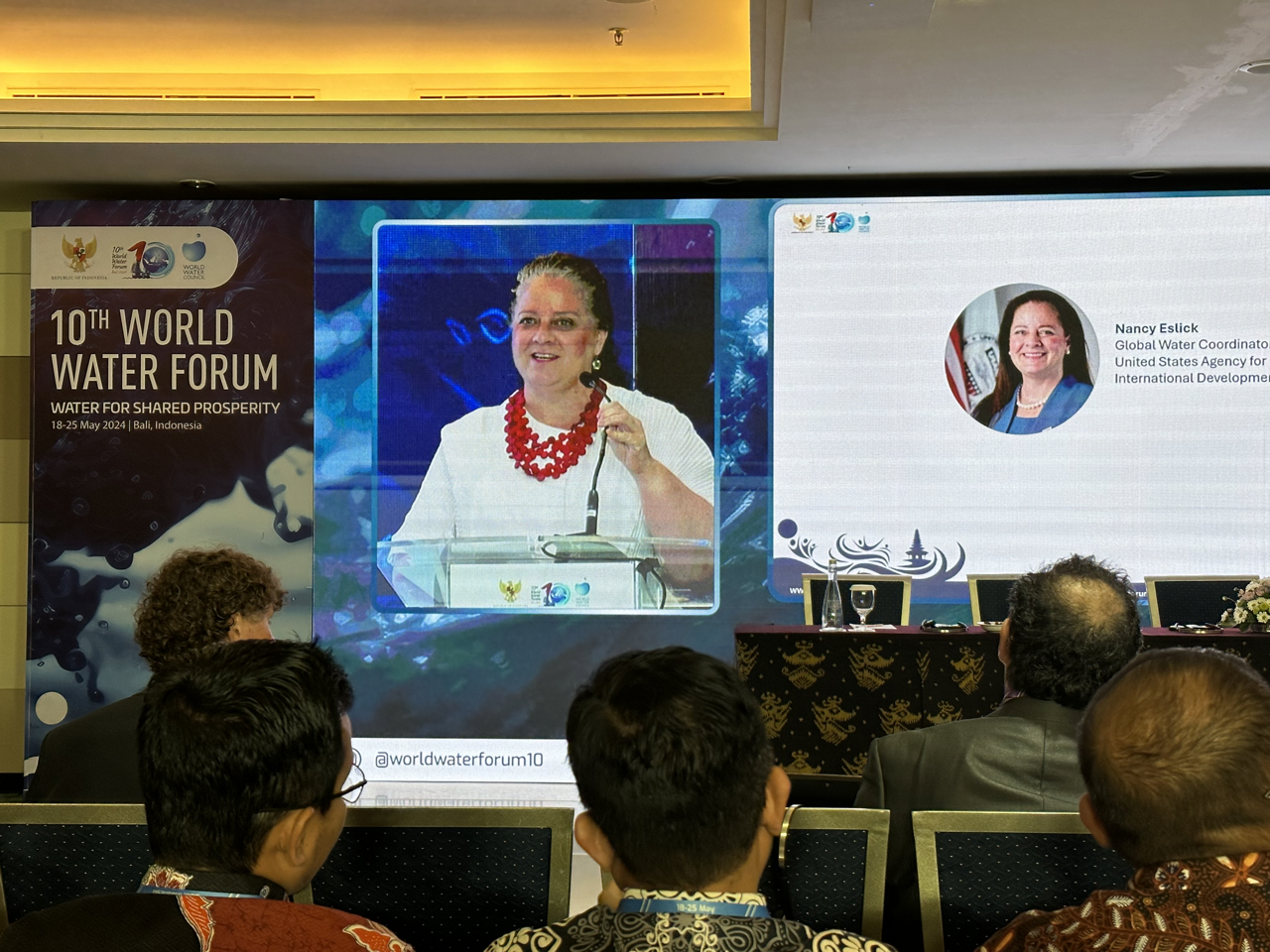We aren’t living in our grandparents’ climate.
Between 2020 and 2022, total economic losses from droughts in those few years equaled almost two-thirds of total losses from the previous 20 years.[1] We can’t escape the headlines that we’ve broken another record for the hottest month in history. More and more intense floods are disrupting basic water services and contaminating waterways across the world, from the coasts of Peru to the mountains and deserts of Pakistan and Afghanistan. Despite these momentous changes, in a lot of places we’re still trying to tackle today’s water challenges with our grandparents’ infrastructure. Water-related climate impacts are felt with increasing intensity around the world, reinforcing the need for solutions that will help us adapt to these new extremes in the long-term.
This May, Forest Trends was honored to gather with experts and practitioners at the 10th World Water Forum in Bali, Indonesia. During the forum, Forest Trends and Aquafed, a global association of private water operators, convened a session to address how we can make our infrastructure more resilient in the face of growing water risks. The panel included innovators from around the world who are already incorporating “green” or “natural” elements into conventional infrastructure designs so that they are better able to withstand new climate extremes.
Five takeaways from panelists on what is needed to make our water infrastructure more resilient:
1. We need “the full rainbow of solutions” in our toolbox.
As Fred Van Heems, President of Aquafed, pointed out, solving the current water crisis will require an all-hands-on-deck and every-color solution. There is increasing recognition across the water field that the level of crisis and changing climate is making our conventional solutions very risky. This means we need to invest in a variety of solutions, including a combination of both gray infrastructure (traditional “built” infrastructure, such as stormwater drains or water treatment plants) and nature-based solutions (NBS), which conserve and restore critical natural infrastructure such as forests, wetlands, grasslands, and mangroves. These landscapes store and filter water, and they protect against water-related disasters. For example, Mara Ramos, Superintendent of Water and Electricity of the State of São Paulo, Brazil, described how they are restoring natural reservoirs and wetlands to mitigate flood risk in the Alto Tietê River Basin.

 As Peru’s Minister of Housing, Construction, and Sanitation, Hania Perez de Cuellar, emphasized: “By integrating nature-based solutions with our existing infrastructure, we can address climate challenges and ensure a safe and sustainable drinking water supply for future generations.”
As Peru’s Minister of Housing, Construction, and Sanitation, Hania Perez de Cuellar, emphasized: “By integrating nature-based solutions with our existing infrastructure, we can address climate challenges and ensure a safe and sustainable drinking water supply for future generations.”
2. More clear evidence is needed to show how NBS are delivering to address priority water challenges.
“We can’t afford it” was a common sentiment we heard when it comes to driving new investment in NBS. In many parts of the world, the water crisis is so urgent that people and governments are focused on meeting basic needs, like access to clean water and sanitation. Just to ensure these needs, the World Bank estimates that, across all Global South countries (who are facing the brunt of the water crisis), an additional $138 billion needs to be invested annually in water infrastructure by 2030—a nearly 3x increase on current levels. With such urgent water challenges, it feels easier to focus on the infrastructure you already know. In these cases, NBS feel like an extra add on.
However, when we really begin to grapple with the impacts of climate change, we begin to see how NBS help us to mitigate water challenges, even while we are working to address basic needs. NBS can reduce operational costs, extend the useful life of gray infrastructure, and provide support in systems that are stretched thin under new climate extremes. A broader evidence base showing these benefits in practice will help clarify the value of NBS for pragmatic decision makers in the water sector. Once we better understand the contributions of combining NBS with gray infrastructure, the question might quickly become, “can we afford not to do it?”
3. Institutional change is needed to mainstream NBS.
Incorporating NBS into the water sector will require both formal and informal institutional change. On one hand, legal or regulatory changes are often needed to allow water sector actors, like utilities, to engage upstream in ways that depart from their historical practices. Once formal barriers are addressed, informal and cultural barriers will also need to start to be addressed. Like any field, the water sector can easily become “boxed into” one kind of solution, and it can feel risky and uncomfortable to explore new possibilities. To some extent, there will always be actors that are more willing to lead the way on new approaches while others remain skeptical. Multi-sectoral commitments and collaborations can provide critical support for the institutional changes necessary to take new approaches.
4. We need to think about how we govern our infrastructure and who is at the table when we do.
The panelists described how making infrastructure climate resilient is not just about the technologies and interventions employed, but also about how we govern and plan our infrastructure — specifically, who is at the table when we do. Jackie Colliar, the Deputy Chair of Te Arataura (the Executive Board of Waikato Tainui, an indigenous (Maori) tribe from Waikato, New Zealand), described how Waikato Tainui’s perspective and co-governance roles influence and direct policy, planning, land use, and infrastructure development within the Waikato River catchment. As Colliar put it, “We are the river, and the river is us. When the river is well, we are well.”

Colliar also provided examples of how the Waikato Tainui led developments to deliver social and economic benefits in a way that aligns with their values, including putting the health and wellbeing of the environment and future generations at the center. Colliar explained, “We practice what we expect of others. For example, in our own developments, we merge our traditional knowledge with the best of modern approaches. These examples help to shift the thinking guiding land use, development, and river management to include trusting and relying on nature for solutions.”
Santiago Gómez Molina, a representative of the World Youth Parliament for Water from Colombia, also described his experience as part of a team building capacity in the Colombian water sector and a water treatment and distribution project in La Guajira, Colombia. Together with young members, the team brought creative solutions for addressing water risks, including new design methodologies, a focus on climate change and sustainability, and an emphasis on a community-based approach.
5. We need to close the knowledge and capacity gaps for NBS.
Gómez Molina pointed out that there is already a huge capacity gap hindering the development of gray infrastructure in the water sector. When it comes to NBS, the gap is even larger. In other words, the problem isn’t always with finding and committing the money itself, but for people to have enough know-how and experience to put the funds into action with NBS projects on the ground.

Nancy Eslick, Global Water Coordinator for the United States Agency for International Development (USAID), pointed to Peru as an example of how to increase local capacity. The Natural Infrastructure for Water Security project (funded by USAID and Canada and implemented by Forest Trends and its partners) has been working in Peru since 2017 to build the tools, capabilities, and governance needed to implement effective NBS projects. This work is having a global impact, too: “Already, USAID is incorporating many of the lessons we have learned from Peru to apply natural infrastructure for flood-risk reduction in Pakistan, improving ground water recharge in Indonesia, and helping utilities in Kenya adopt solar power for pumping water,” Eslick said.
There are many other initiatives advancing and clarifying frameworks for using NBS for water infrastructure. Franz Rojas, Director of Water and Sanitation Analysis from the Development Bank of Latin America and the Caribbean (CAF), shared a successful case of filtering gardens in Sobral, Brazil that was financed by CAF, and also introduced CAF’s methodology for developing and evaluating NBS in their projects.
Even as knowledge about NBS continues to grow, the panelists also mentioned that it is difficult to communicate how much is really happening in this space. Is the rise in discourse translating into more investments? A lack of a clear benchmark can inhibit progress, especially for actors who want to ensure they are in line with the major trends in their industry. Forest Trends and The Nature Conservancy plan to publish a new global benchmark on the State of Investment in Nature-based Solutions for Water Security to provide these data. (The survey to collect data is live here.)
The path forward
The good news is that discussions about incorporating nature into our water infrastructure are no longer niche. Thinking back to the last World Water Forum ten years ago, this type of panel would have been very novel. We’ve certainly come a long way already.
But what is needed now is to translate discussions like this into implementation on the ground, and that is where many of this year’s conversations were heading. There are growing calls to mainstream and scale NBS. We think sharing Peru’s experience successfully scaling up NBS is incredibly important, not only for increasing investments, but for mobilizing funds to implement projects and deliver results.
Continuing to share successes and lessons learned from around the world, especially the Global South, is critical to standardize best practices and avoid duplicating efforts. Just like water-related climate impacts are seen across the world, so—increasingly!—are innovative solutions for resilience.
##
This blog was made possible in part by the support of the American People through the United States Agency for International Development (USAID) and the Government of Canada. The contents of this blog are the sole responsibility of Forest Trends and do not necessarily reflect the views of USAID or the United States Government or the Government of Canada.
[1] Based on analysis by the Development Bank of Latin America and the Caribbean of economic losses and damages of disasters between 2000-2019 and 2020-2022 from the EM-DAT international disaster database.
Viewpoints showcases expert analysis and commentary from the Forest Trends team.
Connect with us on Facebook and Twitter to follow our latest work.
